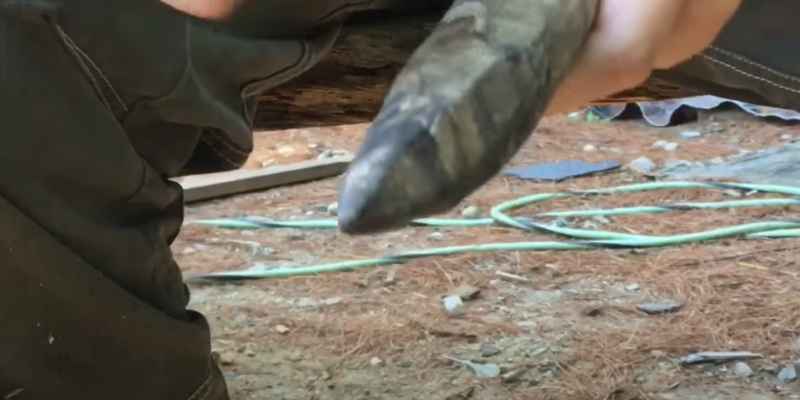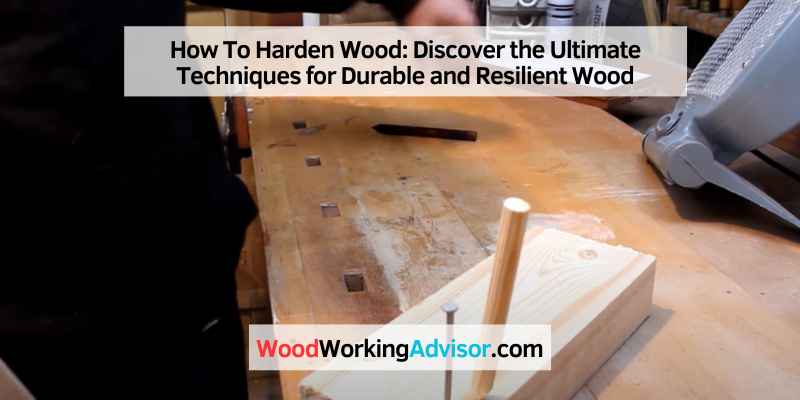Wood is a versatile and widely used material in various applications, from furniture to construction. However, in some cases, wood may need to be hardened to improve its durability, strength, and resistance to wear and tear. If you’re wondering how to harden wood, you’re in the right place. In this guide, we’ll explore different methods and techniques to help you achieve sturdy and long-lasting wood.
1. Air Drying
Air drying is a common method used to harden wood, especially when working with freshly cut timber. Here’s how you can do it:
- Cut the wood into desired shapes and sizes.
- Seal the ends of the wood using wax or paint to prevent moisture loss.
- Stack the wood in a well-ventilated area, preferably with good air circulation.
- Allow the wood to dry naturally, typically for several months to a year, depending on the thickness.
Air drying allows the wood to slowly lose its moisture content, which results in increased hardness and stability. It’s important to note that this method is suitable for small-scale projects and may not be ideal for large pieces of wood.

2. Heat Treatment
Heat treatment is another effective method to harden wood. The process involves subjecting the wood to high temperatures to alter its structure. Here are the steps to follow:
- Preheat the oven or kiln to the desired temperature, typically around 180-220 degrees Celsius (355-430 degrees Fahrenheit).
- Place the wood inside the oven or kiln, ensuring proper air circulation.
- Bake the wood for a specific period, usually several hours, depending on the wood species and thickness.
- Allow the wood to cool down slowly after the heat treatment process.
Heat treatment causes chemical and physical changes in the wood, resulting in improved hardness and dimensional stability. However, it’s crucial to select the right temperature and duration to prevent excessive drying or damage to the wood.
3. Chemical Hardening
Chemical hardening involves using various substances to reinforce the wood fibers. There are several options available:
A. Resins:
Epoxy or polyurethane resins can be used to harden wood. Simply apply the resin to the wood surface, following the manufacturer’s instructions. The resin penetrates the wood fibers and hardens, providing enhanced strength and durability.
B. Wood Hardeners:
Wood hardeners are specific products designed to strengthen and stabilize deteriorated or decayed wood. These hardeners are applied to the affected areas and then left to cure. They seep into the wood, consolidating the fibers and making the wood stronger.
C. Silica Gel:
Silica gel is a moisture-absorbent material that can also help harden wood. Place the silica gel packets or beads near the wood, and they will absorb excess moisture from the environment, leading to improved hardness.
4. Pressure Treatment
Pressure treatment involves introducing preservatives into the wood by subjecting it to high-pressure chambers. This method is commonly used to increase the wood’s resistance to insects, decay, and fungal growth. The pressurized wood treatment process enhances the hardness and overall durability of the wood.

5. Surface Coatings
Last but not least, surface coatings can be applied to wood to provide additional protection and hardening. These coatings include varnishes, lacquers, shellacs, and polyurethane. They create a protective layer on the surface of the wood, enhancing its resistance to scratches, moisture, and wear.
When choosing surface coatings, consider the specific requirements of your project, such as the desired level of gloss, ease of application, and durability.
In conclusion, there are several effective methods available to harden wood, depending on your project’s requirements and the desired level of durability. Whether you prefer air drying, heat treatment, chemical hardening, pressure treatment, or surface coatings, each technique offers unique benefits. Now that you have this comprehensive guide, you can confidently choose the best method to strengthen and enhance the longevity of your wood projects.


